|
|
|

Mammillaria zephyranthoides
It has soft stems. If grown
correctly, it will recompense the
grower with generous displays of large and showy flowers.
|
|
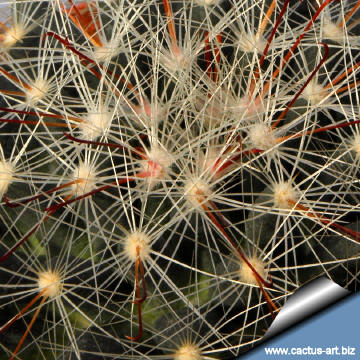 |
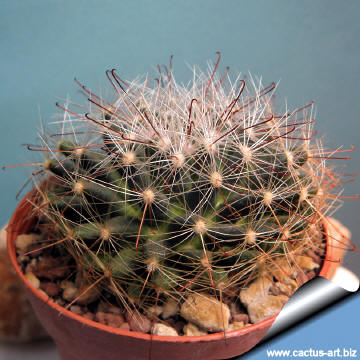 |
|
. |
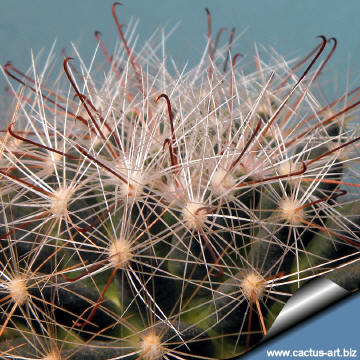
|
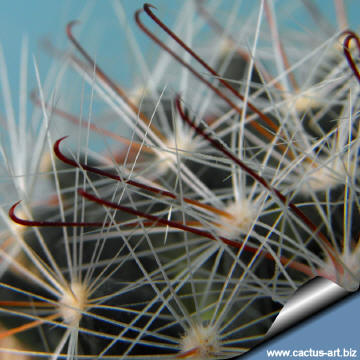
|
|


Advertising
|
|
|
|
|
Family:
Cactaceae (Cactus
Family)
Scientific name:
Mammillaria zephyranthoides Scheidw.
In: Allg. Gartenzeitung 9: 41. 1841
Origin: Central Mexico (Staes fo Guanajuato, Hidalgo, Jalisco,
México, Oaxaca, Puebla and Queretaro)
Habitat: Mattoral xerofilo and Pastizal.
Grows often under bushes scrub on plains and
gravely hills. Altitude 1800-2400 m.
Conservation status: Listed in
CITES appendix 2.
Synonyms:
- Cactus zephyranthoides Kuntze
Rev. Gen. Pl. 1: 261, 1891
- Mammillaria fennelii
- Neomammillaria zephyranthoides
- Mammillaria zephyranthiflora
- Chilita zephyranthoides
- Dolichothele zephyranthoides
- Ebnerella zephyranthoides
- Bartschella zephyranthoides
Etymology: The species name zephyranthoides comes
from the Greek suffix “oides”, resembling, similar
to; and for the genus Zephyranthes (fam.
Armarillidaceae). For the similar looking large flowers.
|
|
Description: Usually
solitary
Stems: Flattened-globose, apex depressed, 1,5 to 8 cm tall and
4-10 cm in diameter. The juice is watery (latex absent).
Tubercles: Conical, soft, flaccid and pliable, rounded apically,
dull blue-green, 1-2,5 cm tall, basal diameter 0,7-1,2 cm, axils naked.
Areoles: 1,5-2 mm in diameter circular to elongated
Central spines: Almost always one, (0-)1(-4) up to 1,7 cm long,
yellowish to reddish, spreading, 1 hooked, while the second central
spine(s) – if present - are straight.
Radial spines: 10-18(-24) slender white 0,8-1,6 cm long straight
silky and slightly pubescent.
Flowers: Unlike most mammillarias, this cactus bears large
funnel-shaped flowers up to 4 cm in diameter, white with pink mid-veins.
Pericarpel green 3-5 mm long, tepals lanceolate, filaments whitish to
pinkish-green, style pinkish-green up to 2 cm long, stigma lobes 6-10
greenish.
Blooming season: March to May
Fruit: up to 2,2 mm long, club-shaped red. The fruits
are juicy.
Seeds: 1.2-1,4 mm large, black.
|
|
|
|
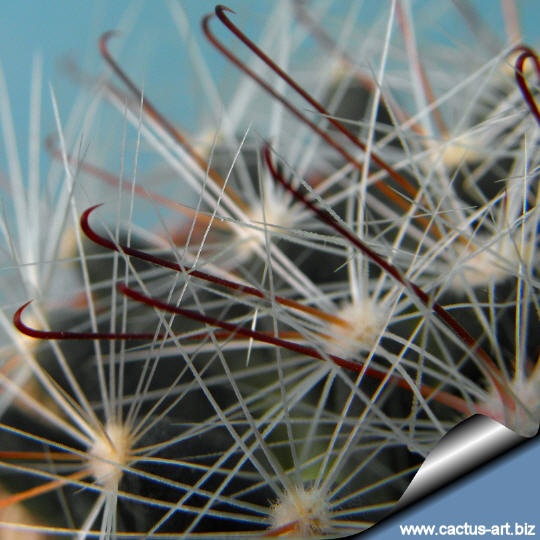
Cultivation: Very easy to grow.
Watering Needs:
It needs
regular water,
but do not water again until dry.
Also,
it is a species that is dormant in the winter and requires
very little water (maybe even none) during the cold months.
Frost Tolerance: Light frost protection
required. Minimum of 5º
C for safe growing
(but hardy down
to -8°C or less.).
Sun Exposure: In spite of its
preference for shade in the wild, in culture, good exposure to sunshine
will favour good spine development. It can get sunburned if moved from
shade/greenhouse into full sun too quickly. During the spring it may be
able to take full sun until the heat arrives at the end of spring. In
an area that has hot afternoon sun, it may be able to take full morning
sun, but requires afternoon shade or afternoon light shade. If grown
correctly, it will reward the grower with generous displays of yellow
flowers. Clumps will be formed quite readily over a few years. Spider
mites are especially attracted to this species, but often are controlled
with overhead watering. Care with repotting is needed, as the thick
taproot is easily damaged.
Propagation: Seeds or offsets that appear at the base; leave them
attached to form a cluster, or wait until they are 1/3 the size of the
parent and then detach and plant.
|
|